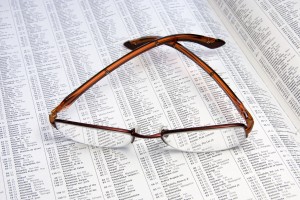Reading Glasses
Do you sometimes wish your arms were a little bit longer so you can hold a magazine far enough away from your eyes so you can read the fine print? As our population begins to age and our eyesight starts to weaken, the need to wear reading glasses has been increasing.
Many people are hesitant to admit that they need reading glasses because they refuse to admit that they are getting older and their eyes are naturally starting to get weak. Just about the time a person hits 40, problems with reading small print start to arise.
 Medical conditions such as hyperopia, more commonly known as farsightedness and presbyopia, a condition that affects the elasticity of the eye, can affect the eye’s ability to focus on close-up words or objects. In some cases, patients can improve their eyesight through surgical techniques, but for most people that can not focus on the small print, reading glasses are the most practical solution.
Medical conditions such as hyperopia, more commonly known as farsightedness and presbyopia, a condition that affects the elasticity of the eye, can affect the eye’s ability to focus on close-up words or objects. In some cases, patients can improve their eyesight through surgical techniques, but for most people that can not focus on the small print, reading glasses are the most practical solution.
Contrary to popular belief, reading glasses do not reverse the condition that caused your eyesight to deteriorate. They only correct your vision while you wear them and allow you to read and function better in your everyday life.
The best thing to do when you start noticing that it is becoming difficult to read is to make an appointment with your optometrist or ophthalmologist and get a thorough eye exam. If you need corrective lenses to see up close, prescription reading glasses are your best option. Although they may be more expensive than the type you can buyoff the rack for $10 or $20 at your local drugstore, they will be customized to your eyes and give you the best chance of seeing normally.
If you do a lot of reading in bright sunlight, you might consider getting sunglasses that can make it easier to see the small letters and words by cutting the glare. Today’s glasses come in very fashionable frames and there is really no excuse for not buying a pair when you need help seeing what you are trying to read.

